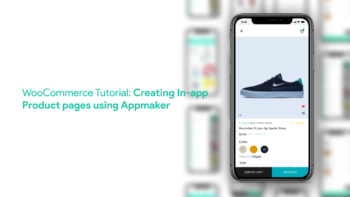
Here’s an eCommerce website Pre-launch checklist for you to check and proceed, with so that you won’t overlook any crucial details when you are about to build an eCommerce website.
Missing out on even a small detail while launching an eCommerce website will fail the whole effort that you put in to coordinate other factors. Read about all of those in this ultimate pre-launch checklist that will make your eCommerce store online a hit.
Pre-launch checklist
You could either be at the pre-launch of a website or planning to take your business to the next level. Below is an elaborate checklist that will go a long way toward setting up an eCommerce website and launching it smoothly.
Step 1: Test your technical functions
Host
Testing your host and confirming it with an SSL certificate is the first and foremost task that you need to do. Take some time before launching your eCommerce store to explore and purchase a hosting package suitable for your eCommerce site.
Server log
Check all debug output to upgrade the site speed and hard drive of the server. You won’t regret this when you see the site speed!
Sitemap
Google SEO minimum parameters need a sitemap to rapidly increase Index. Make sure that you:
- Upload high-quality images with sitemap
- Avoid noindex URLs in sitemaps
- Prioritize canonical URLS
Site speed
A customer might only take 5 seconds to make a decision about whether to buy your product or not. Hence pay enough attention to your website speed. This ensures whether or not it caters to the needs of its viewers.
Step 2: Check your page performance
The reading behavior of a customer is highly dependent on the markets. For this reason, it is important to check how your page appeals to your customers before launching any eCommerce website.
Search engine
The search bar should be placed at a very visible point in every page on your website. The most recommended place is the top right corner.
Navigation menu
Optimize the position and arrangement of the menu bar. Make sure the tools and carts are easily accessible.
Cart icon
Similar to the search bar, make sure that the cart icon is clearly visible on the top right corner.
Contact information
Contact information must comprise:
- Hotline
- Email address
- Address
- Fax
It is of importance that this information is presented on every page so that the customer can get in touch you anytime.
Step 3: Test the core actions of the customer
Make sure all the core call actions are up and active.
Choosing products
Core actions or most used functions in a product page include:
- Add to cart
- Add to wishlist
- Buy now
- Sort and filter
Cart
A cart is a place where the customer controls their choice or decides to buy. During the checkout ensure that the following details are clear:
- Product name and image
- Product price (including discounts, total amount, logistics fee, etc.)
- Editable fields such as number, color, etc.
- Link to product page
- Remove and clear options
Shipping
Give out details such as estimated time of shipping and whether any shipping fees is applicable.
Payment methods
Setup and offer suitable payment methods to the customers so that they come back again to your eCommerce website. Clearly mention if you support cash-on delivery methods.
Confirmation
Ensure security and payment confirmation using methods such as ReCaptcha and One-time password (OTP) through email or phone number.
Step 4: Maximise the customer experience
Ensure that your placement of logo, color palette, and product images, along with fonts are optimized aesthetically so that the customer experience is maximized.
Step 5: Check additional functions
Policies
Having a set of well-formulated policies creates customer confidence which may create loyal customers for your eCommerce website. The links to the following policy pages must be ideally given in all the pages:
- Customer Testimonials
- Why Us
- Privacy Policy
- Delivery Information
- Return Policy
Live chat
Launching an eCommerce website doesn’t end at putting in the content and functionalities, it also requires setting up an active customer support system. Set up a live chat option so that the customers can quickly contact you and get their issues resolved as soon as possible.
Comments and reviews
Allowing your customers to contribute some content to your website makes it an interactive forum and builds a platform for sharing insights. This content could be ratings, reviews, or received product images.
Step 6: Analyze the content and SEO considerations
Make sure that the title tags and meta description are unique so that it stands out in the Google SERP. Check if you have optimized the following:
Product page should include
- Title tag modifiers
- Include content in the product page
- A keyword-rich description
- Alt tags
SEO-optimized images
- Include alt text
- An appropriate name for URLs and context purpose
- Smaller file size for faster loading
Conclusion
The above eCommerce website setup checklist can be a quick reference card for your eCommerce website launch or a step-by-step guide for moving through the launching process systematically. Check all the points in this list and you are ready to go!
Already a WooCommerce store owner? Build a Mobile App to Win More Customers
Appmaker specialises in Quality and Performance guaranteed, E-Commerce Android/iOS Apps for E-Commerce Businesses. Get in touch










No Comments
Leave a comment Cancel